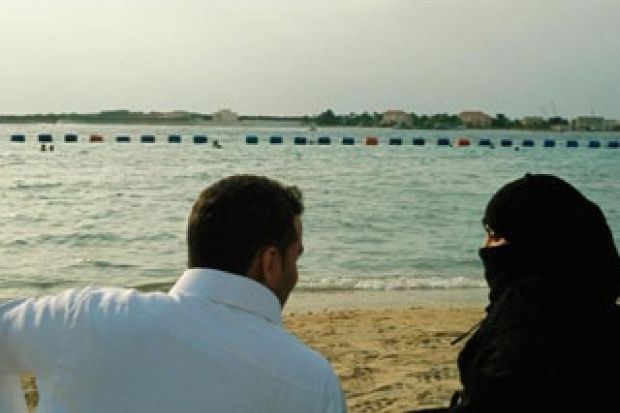A much-viewed YouTube video clip features former US president Jimmy Carter describing religion as a “basic cause” of women’s oppression. While not an uncommon claim, it is perhaps most frequently invoked in conversations about women’s status in the Kingdom of Saudi Arabia. Because of the reductionist nature of the claim, and because it is so commonplace in relation to Saudi Arabia, Madawi Al-Rasheed’s book A Most Masculine State: Gender, Politics, and Religion in Saudi Arabia is both a significant addition to scholarship on gender in the kingdom and a noteworthy contribution to larger debates about gender and religion.
Although Al-Rasheed does not dispute the centrality of religion, she shows that it is a complex interplay between religion and other factors (rather than religion per se) that has resulted in the pronounced gender stratification in Saudi Arabia. Drawing on her earlier research on the nation’s history, she argues that “in the absence of a unifying national narrative…the Saudi state [after 1932] transformed the eighteenth-century Wahhabi religious revival into religious nationalism” with a view to legitimising the newly created political community. The concept of “religious nationalism” is clearly distinct from religion and, although it has been widely used since the 1990s, Al-Rasheed’s application of the concept focuses particular attention on important similarities between religious and secular nationalism. When used with such precision, it has considerable analytical value and can facilitate important insights in the relationship between gender, state, politics and religion in a variety of contexts.
The unique form of religious nationalism present in Saudi Arabia combined with intense modernisation has been central to state formation efforts in the kingdom and has influenced the gender system in striking ways. Al-Rasheed argues that considerable fluctuations in the gender gap in Saudi Arabia during the past 50 years can be explained only with reference to politically motivated state interventions, not by religion. This is demonstrated through a meticulous analysis of contradictory trends associated with modernisation initiatives, such as the state-sponsored education of women beginning in the 1960s, state-sanctioned religious opinions (fatwas) issued during the 1980s, and the state’s efforts to increase the public presence of (some) women since 2001 in order to protect its international image. Al-Rasheed also shows how oil wealth is both an obstacle to and a facilitator of women’s participation in public life.
From the start of the book, Al-Rasheed challenges simplistic and contradictory images of Saudi women as veiled victims and/or glamorous, cosmopolitan entrepreneurs. These stereotypical presentations thrive, in part, because of the scarcity of high-quality literature on gender relations and women’s actual lives. Drawing on a remarkable range of sources, the book’s second half examines how women have reflected on and, in some cases, challenged the gender system. A sensitive and sophisticated analysis of literary texts, interviews and personal exchanges with Saudi women from varying backgrounds and of different convictions challenges the idea that they - or any other group of women defined by nationality - constitute a homogeneous group. Here, Al-Rasheed considers the very diverse viewpoints of women such as Bariyya al-Bishr and Raja al-Sani. Al-Bishr is a sociologist and writer who has voiced strong objections to religiously justified restrictions on women’s economic and political participation, while al-Sani is probably the best known representative of a second generation of female Saudi writers thanks to the commercial success of her 2004 novel Girls of Riyadh. Al-Rasheed also considers contributions by numerous other Saudi women, including a new generation of multazimat (which she defines as “women who are committed to the Islamic tradition [and] offer Islamic solutions to everyday challenges”).
Reading A Most Masculine State, perhaps along with Gerda Lerner’s classic The Creation of Patriarchy (1986), might encourage Carter and other participants in the debate about the “basic causes” of women’s oppression to shift their focus from religion to the state. Ultimately, Al-Rasheed goes even further than advocating this shift by showing that a narrow focus on one institution is inadequate and that we must consider the interplay between human beings, institutions, ideologies and material reality. This book deserves praise and - more importantly - to be read by those with an interest in Saudi Arabia or a desire to learn more about the factors and mechanisms that contribute to women’s continued marginalisation worldwide.
A Most Masculine State: Gender, Politics, and Religion in Saudi Arabia
By Madawi Al-Rasheed
Cambridge University Press, 334pp, £50.00 and £18.99
ISBN 9780521761048, 122528 and 9781139602839 (e-book)
Published 30 May 2013




